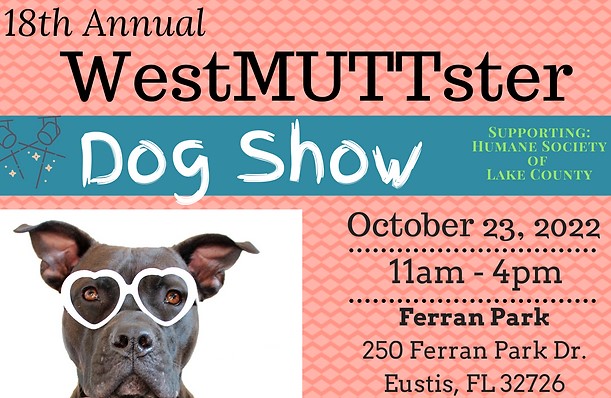The Impact of Dog Food on Allergies and Unwanted Reactions in Dogs
Understanding how various dog foods can cause allergies and unwanted reactions in dogs is crucial for maintaining canine health and well-being. This article delves into the ingredients commonly found in dog foods that may trigger adverse reactions, the mechanisms behind these allergies, and the symptoms pet owners should watch for. Additionally, we’ll explore diagnostic methods, treatment options, and strategies for prevention. Several ingredients in commercial dog foods are known to cause allergies in dogs. The most common allergens include proteins, dairy products, grains, and additives and preservatives. Proteins are the leading cause of food allergies in dogs. Beef, chicken, and lamb are frequently used in dog foods, making them common allergens. Dogs can develop an immune response to these proteins, leading to allergic reactions. Dairy products can also cause issues, particularly in dogs that are lactose intolerant. Lactose intolerance in dogs can lead to digestive problems such as diarrhea and gas, while an allergy to dairy can cause skin problems and itching. Grains like wheat, corn, and soy are often included in dog foods as fillers. Some dogs develop allergies to these grains, resulting in symptoms like itching, ear infections, and gastrointestinal distress. Additives and preservatives are another potential source of allergies. Artificial colors and flavors can trigger allergic reactions, as can certain preservatives used to extend the shelf life of dog food.
Allergic reactions in dogs occur when the immune system mistakenly identifies a harmless substance as a threat. This immune response involves several steps: sensitization, subsequent exposure, and release of histamines. The exact cause of food allergies in dogs is not fully understood, but genetics, diet, and environmental factors likely play a role. Certain breeds, such as Boxers, Bulldogs, and Retrievers, are more prone to food allergies. Identifying food allergies in dogs can be challenging, as symptoms often overlap with other conditions. Common signs of food allergies include skin problems, gastrointestinal issues, respiratory symptoms, and behavioral changes. Skin problems are the most prevalent symptom of food allergies in dogs. Allergic dermatitis can cause intense itching, leading to scratching, biting, and licking of the skin. This can result in secondary infections and hair loss. Gastrointestinal issues are also common, with symptoms like vomiting and diarrhea indicating a possible food allergy. These symptoms can lead to weight loss and dehydration if not addressed promptly. Respiratory symptoms are less common but can occur in severe cases. Sneezing, coughing, and wheezing may indicate an allergic reaction affecting the respiratory system. Behavioral changes can be subtle but significant. Dogs with food allergies may exhibit restlessness and engage in excessive licking or chewing of their paws.
Diagnosing food allergies in dogs involves several steps: detailed history, elimination diet, food challenge, and blood tests. A detailed history helps veterinarians identify potential allergens and understand the severity of the dog’s symptoms. This information guides the diagnostic process and informs treatment decisions. The elimination diet is a critical step in diagnosing food allergies. During this period, the dog is fed a novel protein and carbohydrate source that it has not been exposed to before. Common hypoallergenic diets include options like venison and potato or duck and pea. After the elimination diet, the food challenge involves reintroducing suspected allergens one by one. This helps pinpoint the specific ingredient causing the allergic reaction. Careful monitoring of the dog’s response to each reintroduced food is essential. Blood tests can also aid in diagnosing food allergies. These tests measure the levels of antibodies to specific allergens in the dog’s blood. However, blood tests are not always definitive and should be used in conjunction with other diagnostic methods.

Once a food allergy is diagnosed, the primary treatment involves avoiding the allergen. This requires a commitment to feeding the dog a restricted diet and carefully reading ingredient labels on commercial dog foods. Dietary management is the cornerstone of treatment. Feeding a hypoallergenic diet ensures that the dog does not consume the allergen. In some cases, home-cooked meals may be necessary to control the ingredients and avoid contamination. Medications can help manage the symptoms of food allergies. Antihistamines and corticosteroids reduce itching and inflammation, while omega-3 fatty acids support skin health and reduce allergic reactions. Supplements like probiotics and digestive enzymes support gut health and can help alleviate gastrointestinal symptoms. These supplements promote a healthy balance of gut bacteria and improve digestion. Regular monitoring is essential to ensure the effectiveness of the treatment plan. Keeping track of the dog’s symptoms and adjusting the diet as needed helps prevent flare-ups and manage allergies effectively.
Preventing food allergies in dogs involves several strategies: early exposure, high-quality diet, gradual changes, and regular vet checkups. Early exposure to a variety of proteins and carbohydrates during puppyhood may help reduce the risk of developing food allergies. Introducing different foods early on helps the immune system recognize these ingredients as non-threatening. Feeding a high-quality diet with minimal additives and fillers is crucial. High-quality dog foods use real meat and vegetables as primary ingredients, reducing the likelihood of allergic reactions. Gradual changes when introducing new foods help prevent digestive upset. Gradually mixing the new food with the old food over a week allows the dog’s digestive system to adjust. Regular vet checkups ensure that any early signs of allergies are identified and addressed promptly. Veterinarians can provide guidance on diet and help manage any emerging allergies.
Several case studies illustrate the impact of food allergies on dogs and the effectiveness of different treatment strategies. Case Study 1: Max, a 5-year-old Golden Retriever, developed severe itching and chronic ear infections. After an elimination diet, it was determined that Max was allergic to chicken and wheat. Switching to a hypoallergenic diet with venison and potato resolved his symptoms. Case Study 2: Bella, a 3-year-old French Bulldog, experienced vomiting and diarrhea. Blood tests revealed an allergy to dairy products. Eliminating all dairy from Bella’s diet and introducing probiotics improved her gastrointestinal health. Case Study 3: Rocky, a 7-year-old Boxer, suffered from hives and respiratory issues. An elimination diet and food challenge identified beef and soy as allergens. A diet based on fish and sweet potato alleviated Rocky’s symptoms. These cases highlight the importance of identifying specific allergens and tailoring the diet to meet the dog’s needs. Each dog’s response to food allergies is unique, requiring individualized treatment plans.
Food allergies and unwanted reactions in dogs are complex and multifaceted. Identifying and managing these allergies involves understanding common allergens, recognizing symptoms, and implementing effective treatment strategies. By feeding high-quality diets, introducing a variety of foods early on, and maintaining regular veterinary care, pet owners can help prevent and manage food allergies in their dogs. This proactive approach ensures that dogs lead healthy, comfortable lives free from the discomfort of food allergies. While advancements in veterinary medicine have made it easier to diagnose and treat food allergies in dogs, ongoing research continues to improve our understanding of this condition. Future studies may provide insights into the genetic factors that predispose certain breeds to food allergies, leading to more targeted prevention and treatment strategies. Additionally, the development of novel hypoallergenic dog foods and supplements promises to offer more options for pet owners. Educating pet owners about the potential risks associated with common dog food ingredients is crucial for the early detection and management of food allergies. Awareness campaigns and resources provided by veterinarians and pet food manufacturers can empower owners to make informed decisions about their dog’s diet. This knowledge, combined with a vigilant approach to monitoring and managing symptoms, can significantly enhance the quality of life for dogs suffering from food allergies.






